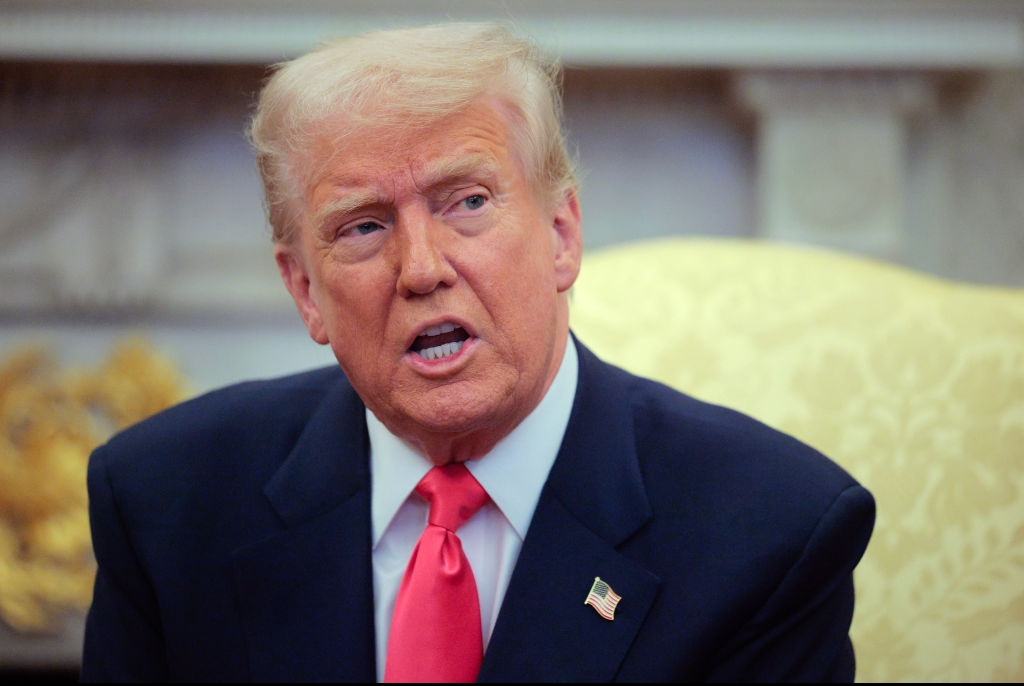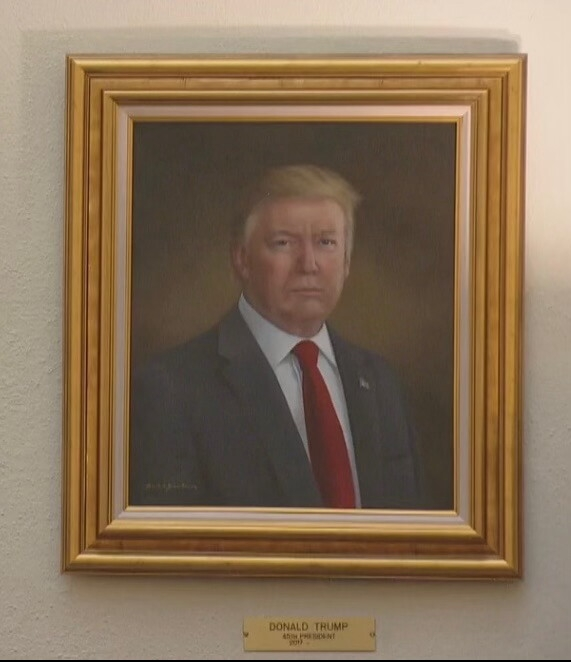Former President Donald Trump is once again at the center of controversy—but this time, it’s not over a policy or speech. It’s about a portrait. Yes, a painting. More specifically, a presidential portrait hanging in the Colorado State Capitol, which Trump has described as “purposefully distorted” and “truly the worst.”
The portrait, created by renowned artist Sarah Boardman, has quietly hung in the third-floor rotunda of the Capitol since 2019. But now, it’s the subject of a national debate fueled by presidential outrage, artistic freedom, and political undercurrents.
So, what exactly is going on with this painting? Let’s break it down.

The Controversial Portrait in Question
The artwork that’s ignited Trump’s fury is part of a presidential gallery featuring portraits of past U.S. leaders. It was commissioned shortly after Colorado raised funds through private donations—specifically with the help of former state Senate President Kevin Grantham, a Republican.
Painted by Sarah Boardman, the artist behind the Capitol’s portrait of President Barack Obama, the goal, she claimed, was to keep both depictions politically neutral.
“In another five, 10, 15 years, he will be just another president on the wall,” Boardman told reporters at the time. “He needs to look neutral.”
But Trump sees it very differently.
Video: President Donald Trump calls for removal of ‘distorted’ portrait from Colorado Capitol
Trump’s Fiery Reaction on Truth Social
Over the weekend, Trump took to his social platform, Truth Social, to blast the painting. In a sharply worded post, he described the portrait as “distorted to a level that even I… have never seen before.”
He didn’t hold back:
“Nobody likes a bad picture or painting of themselves, but the one in Colorado… was purposefully distorted.”
Trump then took a swipe at the artist directly, suggesting she had done a far better job with Obama’s portrait:
“The artist also did President Obama, and he looks wonderful, but the one on me is truly the worst. She must have lost her talent as she got older.”
It didn’t stop there. Trump claimed he had received calls and messages from angry Coloradans who felt the portrait was disrespectful. He even tied his frustrations to Colorado Governor Jared Polis, accusing him of being weak on crime and mismanaging threats like the Venezuelan Tren de Aragua gang.
“Jared should be ashamed of himself!” Trump concluded.

Governor Polis Responds with a Subtle Jab
Colorado Governor Jared Polis didn’t appear rattled by Trump’s statements. In fact, his office issued a cheeky but measured response, thanking the former president for his interest in Colorado’s Capitol and its historic features.
“Gov. Polis was surprised to learn the President of the United States is an aficionado of our State Capitol and its artwork,” a spokesperson said.
They went on to highlight the Capitol’s historic elements, including its Rose Onyx and White Yule Marble, and stated they “always look for opportunities to improve the visitor experience.”
In other words, they’re not planning to remove the portrait anytime soon.
Art, Politics, and Public Perception Collide
This isn’t the first time a political figure has objected to how they’ve been depicted in art—but Trump’s reaction has reignited a conversation around artistic interpretation versus political image control.
Boardman, a respected portrait artist, likely followed traditional methods to portray a neutral image—yet art is subjective. What one person sees as “neutral,” another might view as unflattering. In Trump’s case, the distinction between artistic realism and personal offense seems to have blurred.
It raises a question: Should presidential portraits aim to flatter, or simply capture reality?
Video: TRUMP PORTRAIT: Colorado Lawmakers Unveil President Trump Painting
The Power of Portraits in Political History
Presidential portraits carry weight. They hang in state buildings, museums, and libraries. They don’t just show what a president looked like—they often capture the mood, legacy, and cultural tone of an era.
Think of the haunting elegance of Abraham Lincoln’s portraits, or the cool composure of JFK. They’re more than images—they’re statements.
In that context, it’s not surprising that Trump is so sensitive to his visual legacy. With his focus on image, branding, and optics throughout his career, this painting strikes a deeper chord than it might for others.
Supporters and Critics React Nationwide
As expected, the internet lit up with opinions. Supporters of Trump backed his frustration, calling the portrait a “disgrace” and an intentional jab from a liberal-leaning state.
Critics, on the other hand, accused Trump of being overly sensitive and trying to control the narrative even when it comes to stationary artwork.
Meanwhile, art communities defended Boardman, praising her for maintaining neutrality and resisting the urge to stylize her subjects.
It’s a classic example of how art can ignite heated political debates—even when it’s hanging quietly on a government wall.
Conclusion
What started as just another painting in a historic rotunda has now turned into a full-blown political spectacle. Trump’s demands to remove the Colorado Capitol portrait highlight his ongoing battle with perception, while Governor Polis’ calm response suggests the state won’t bend under pressure.
Whether you see the portrait as neutral, unflattering, or even just forgettable, one thing’s clear: art still holds power in the political world. And sometimes, it only takes a single brushstroke to stir up a national conversation.
In the end, the painting remains, but so does the reminder that in politics—as in art—beauty is always in the eye of the beholder.